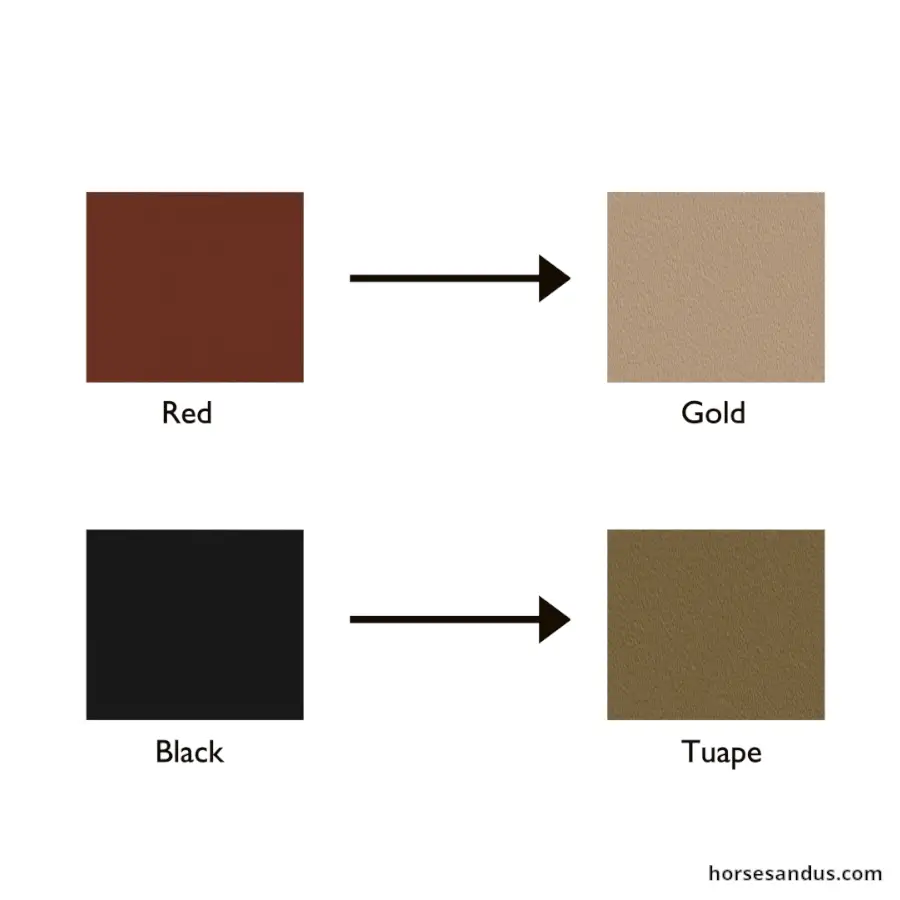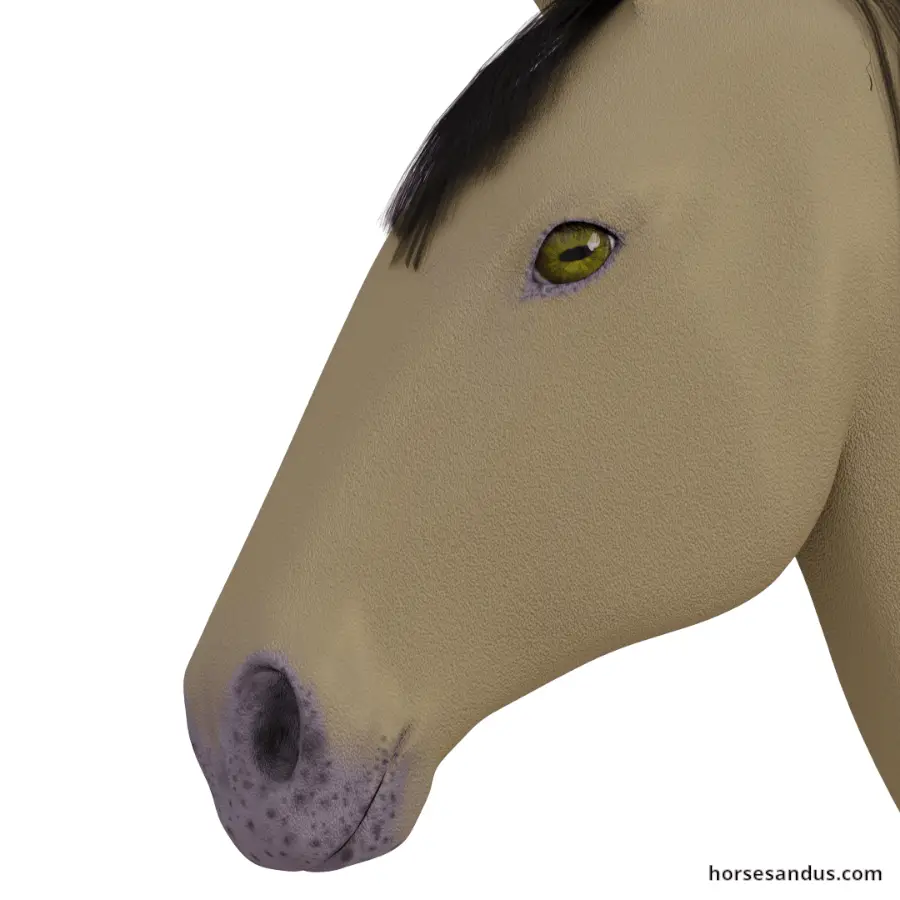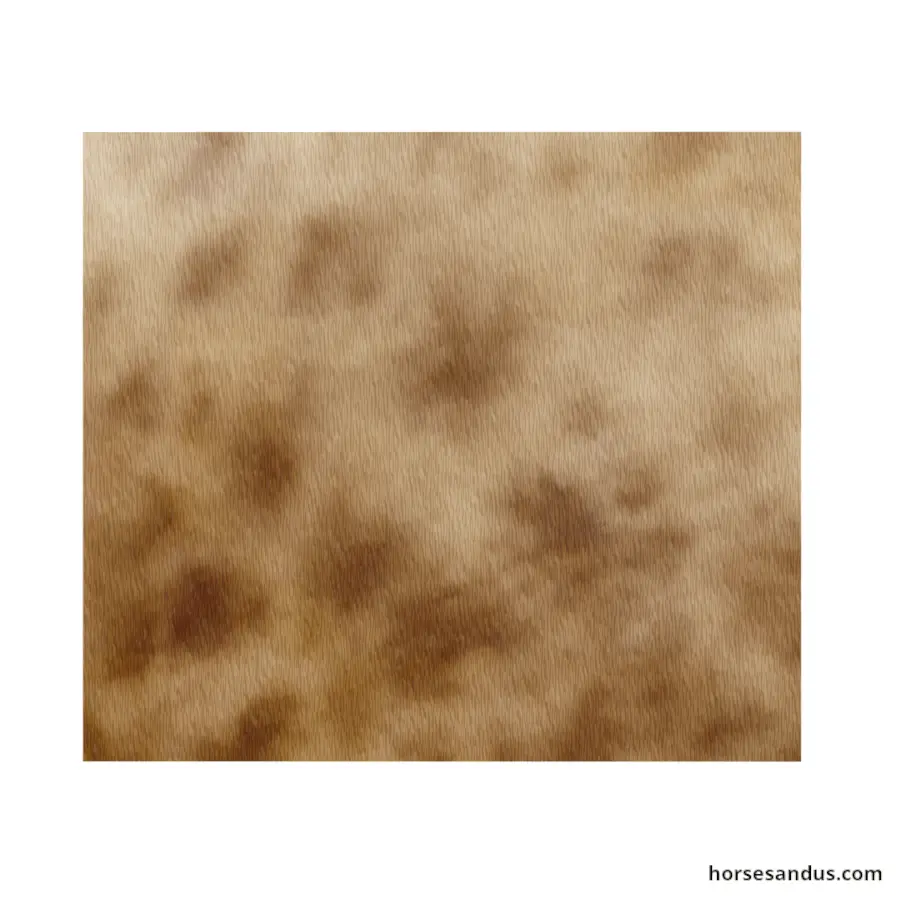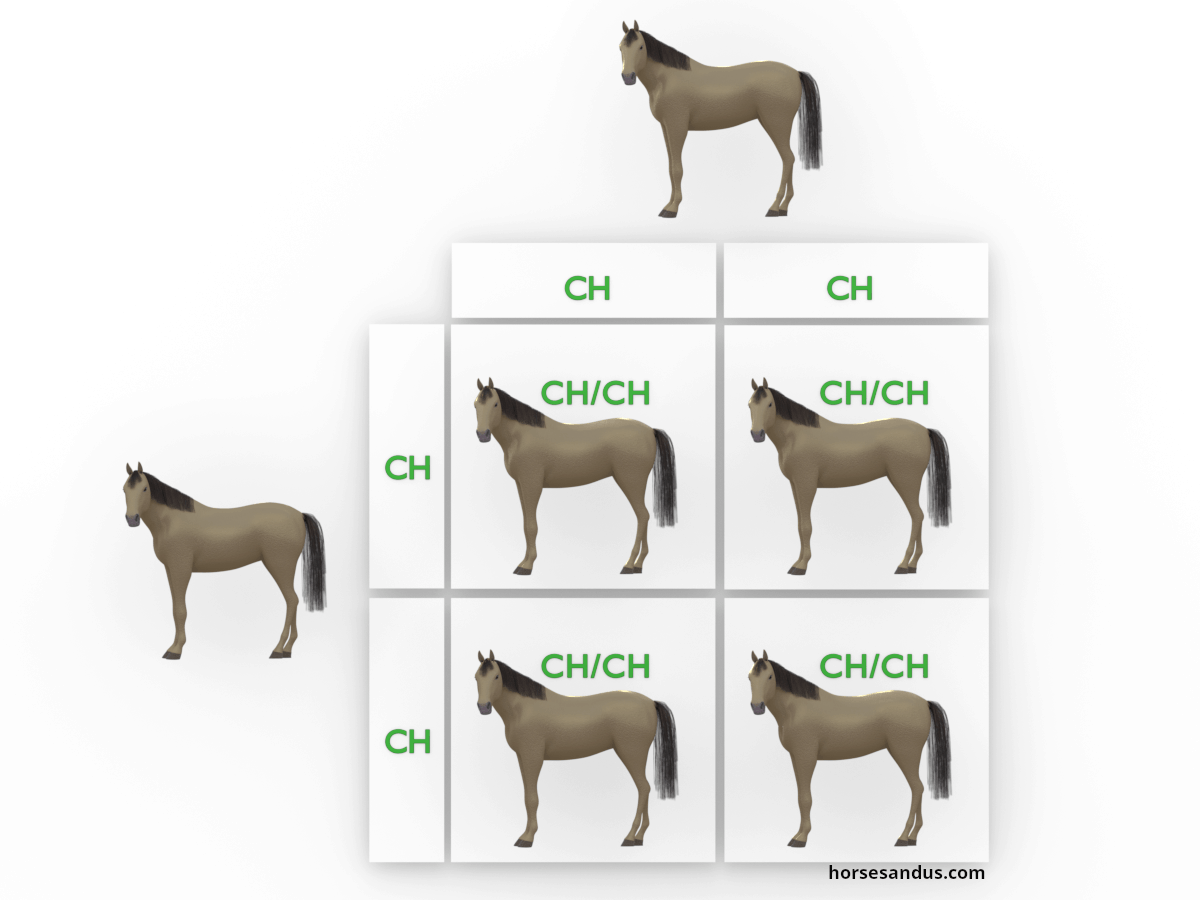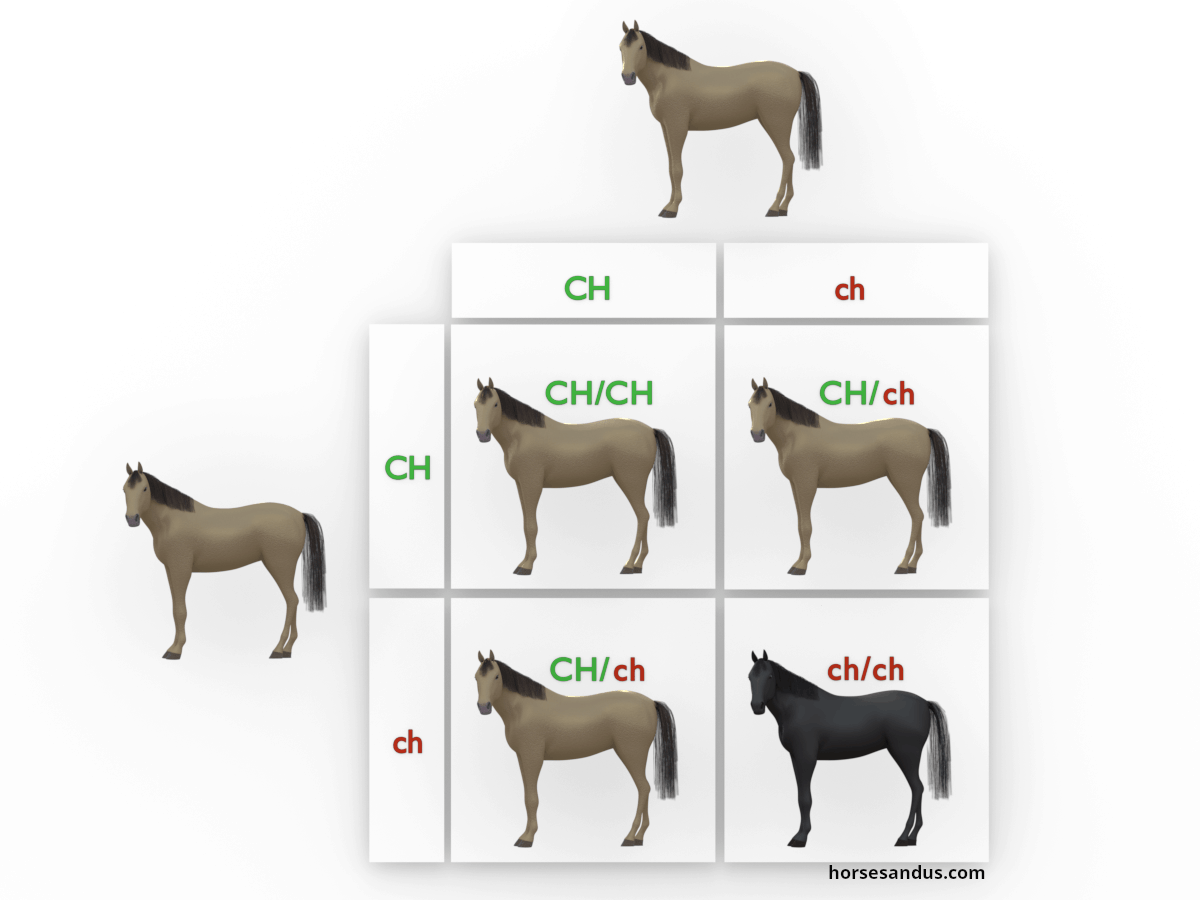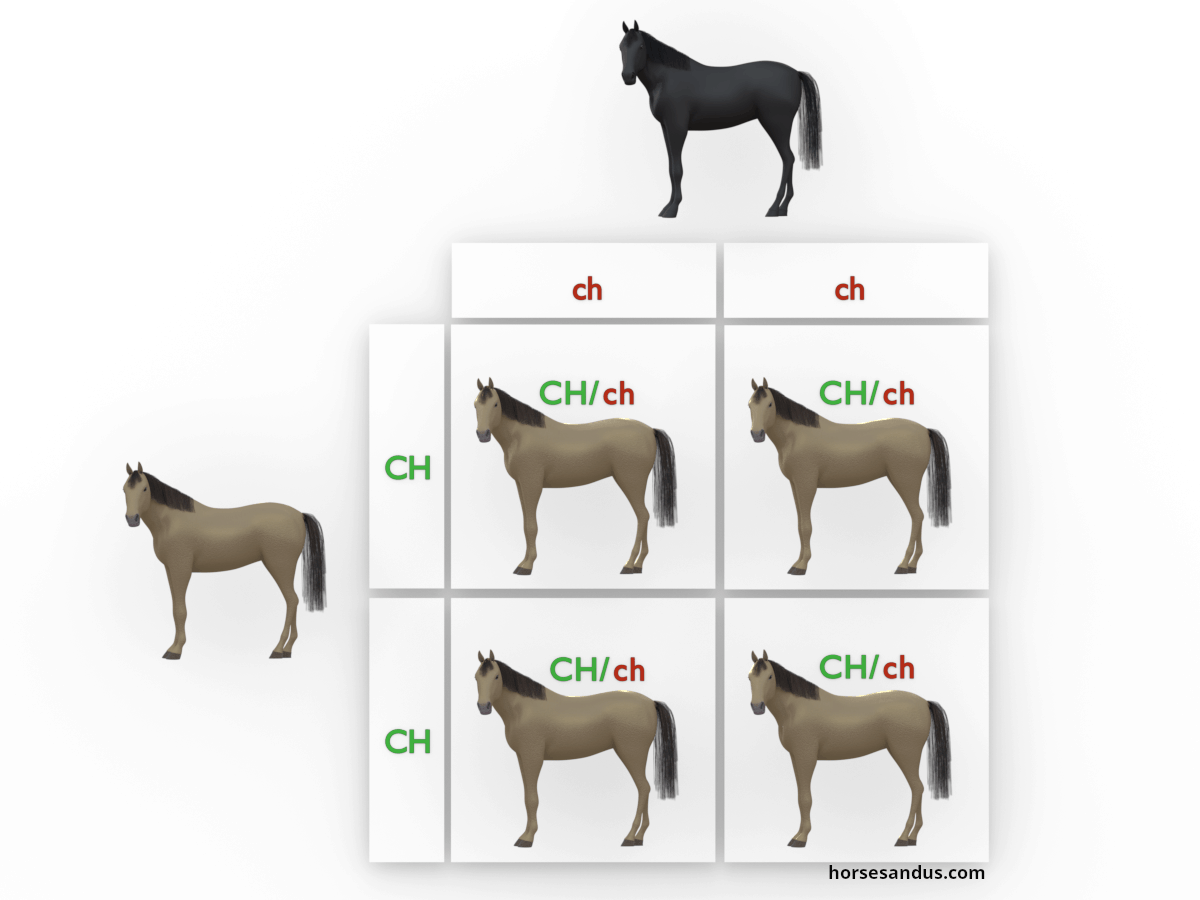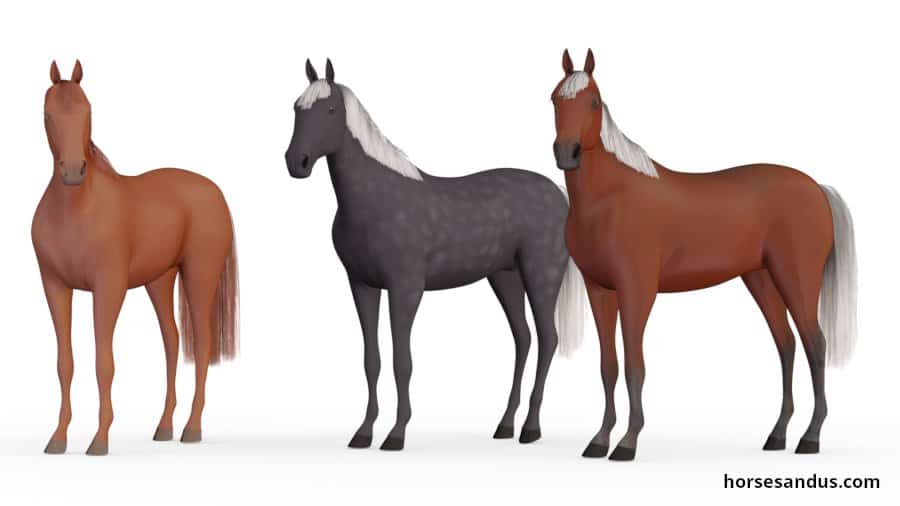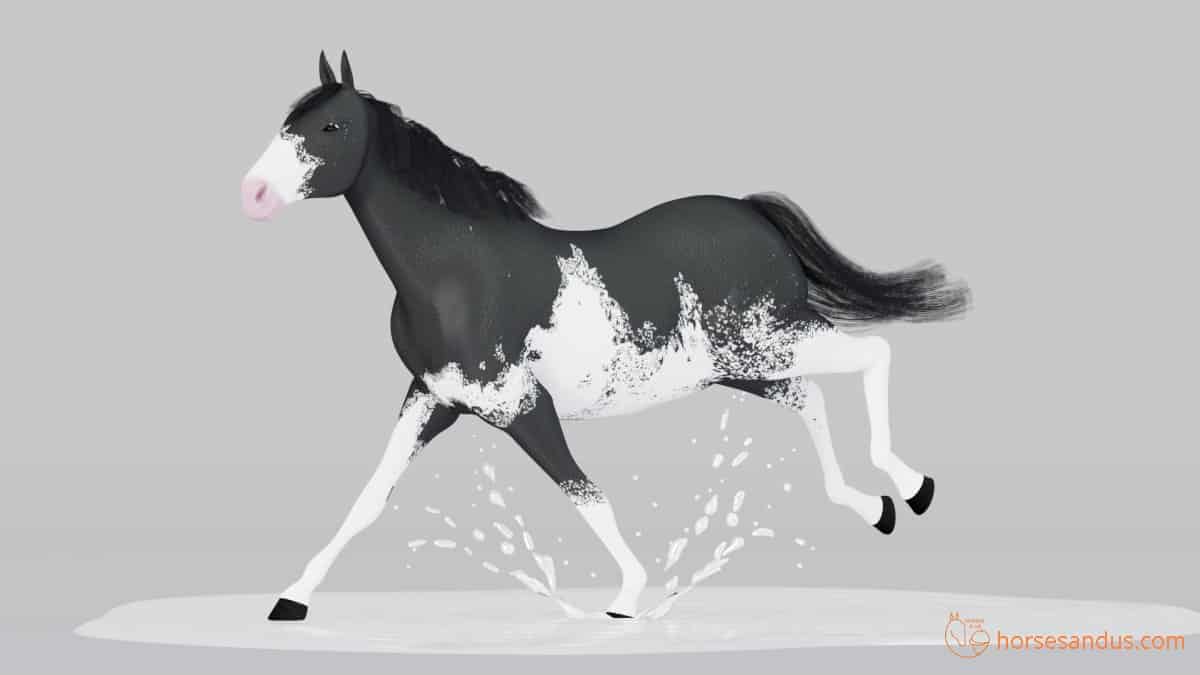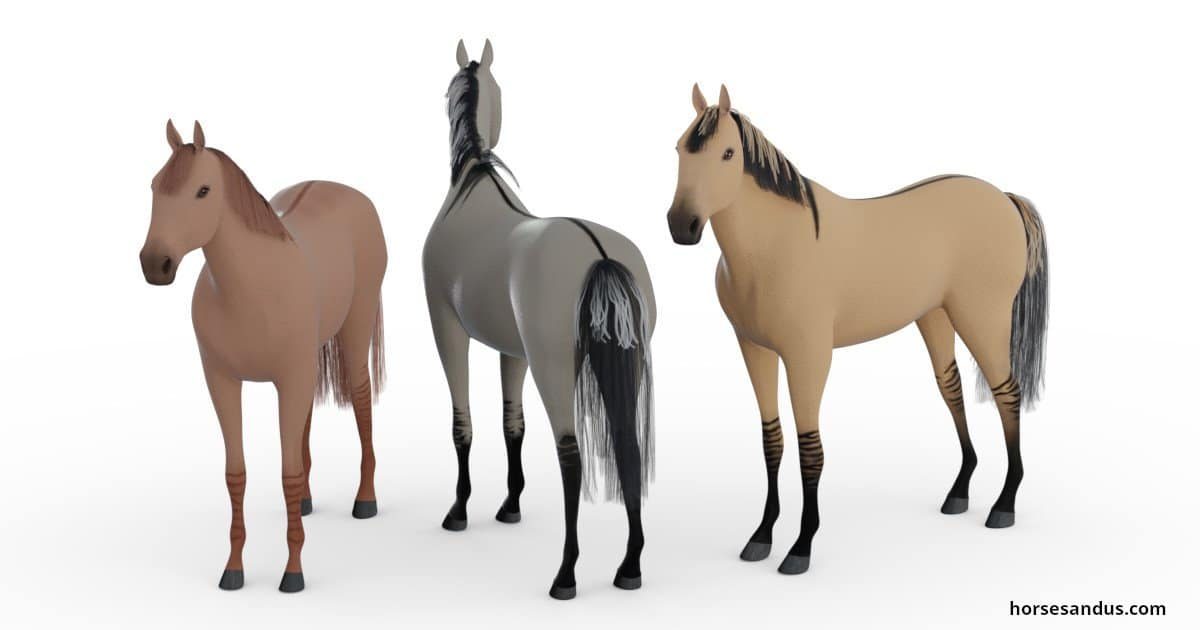This champagne horse is rare and unique. It is thought to be a fairly recent coat color, because it is only present in some horse breeds of North America.
The Champagne horse is affected by the Champagne dilution gene that acts on black and red hair pigment. The Champagne dilution gene lightens the black pigment to taupe and red pigment to gold.
It also lightens the eyes to an amber color and the skin to a purplish color with freckles, especially around the eyes, muzzle, and genitals. However, if you wet the horse, you can see the champagne freckles all over the skin.
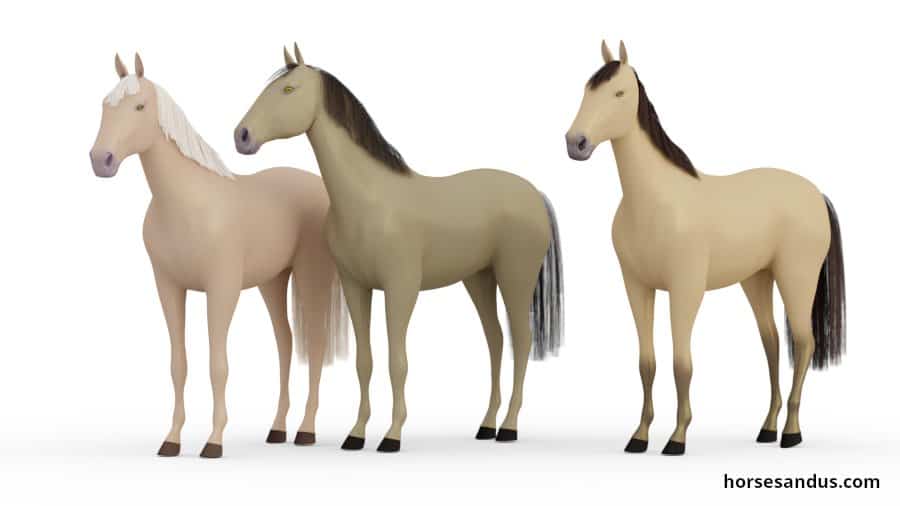
There is a wide variety of horse colors and patterns. In this article, we will look at the colors produced by the champagne gene.
Characteristics of the Champagne Horse
The phenotype produced by this gene is very attractive, with hazel eyes and a metallic sheen coat. The metallic sheen is usually present in gold champagnes but occasionally in the other champagne shades as well.
Many horse breeders value it due to its beautiful coat. But it can be difficult to distinguish from the effect produced by the cream dilution gene (CR) on palominos and buckskins.
To distinguish the champagne dilution gene from other dilution genes, we need to observe the following characteristics of the champagne horse:
The Champagne foals are born with pale blue eyes that will later change to green or, more commonly, to hazel as they grow older. They also have clear pink skin, which transforms into a darker purplish freckled complexion around the eyes, muzzle, and genitalia as the animal matures.
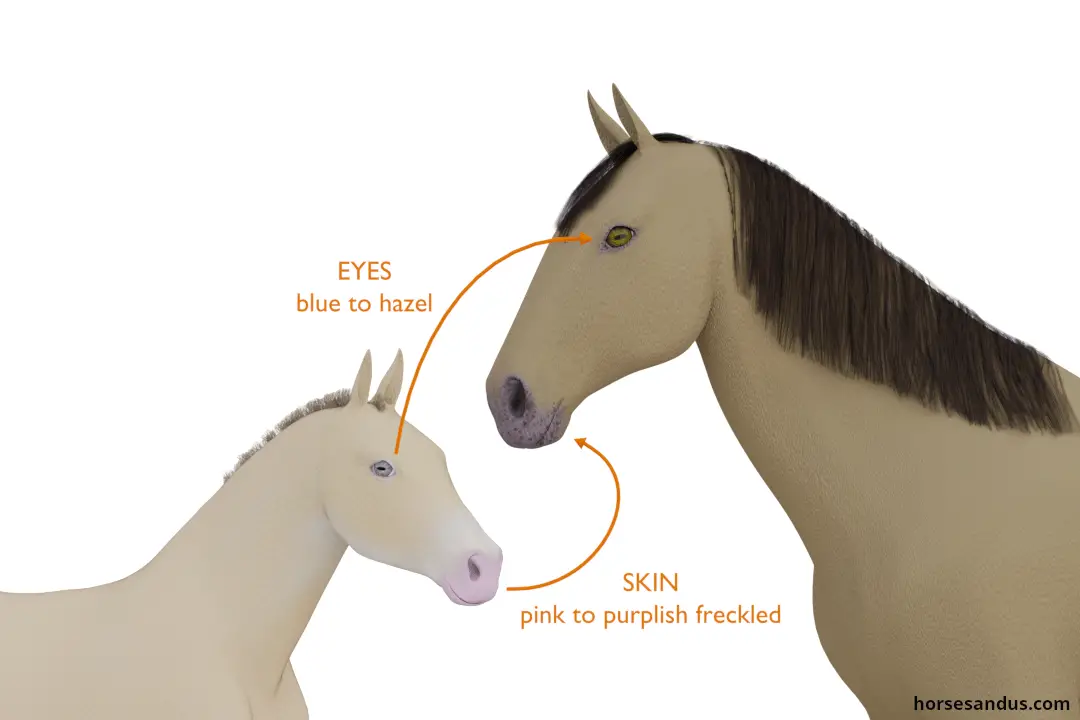
Some palominos are also born with pale blue eyes and pink skin. However, in these foals, the eyes and skin color will change within a matter of days. Whereas in the champagne foal, the color changes will often take months.
Champagne dilution on the 3 base coat colors
The shade of a Champagne horse varies with the underlying base coat color.
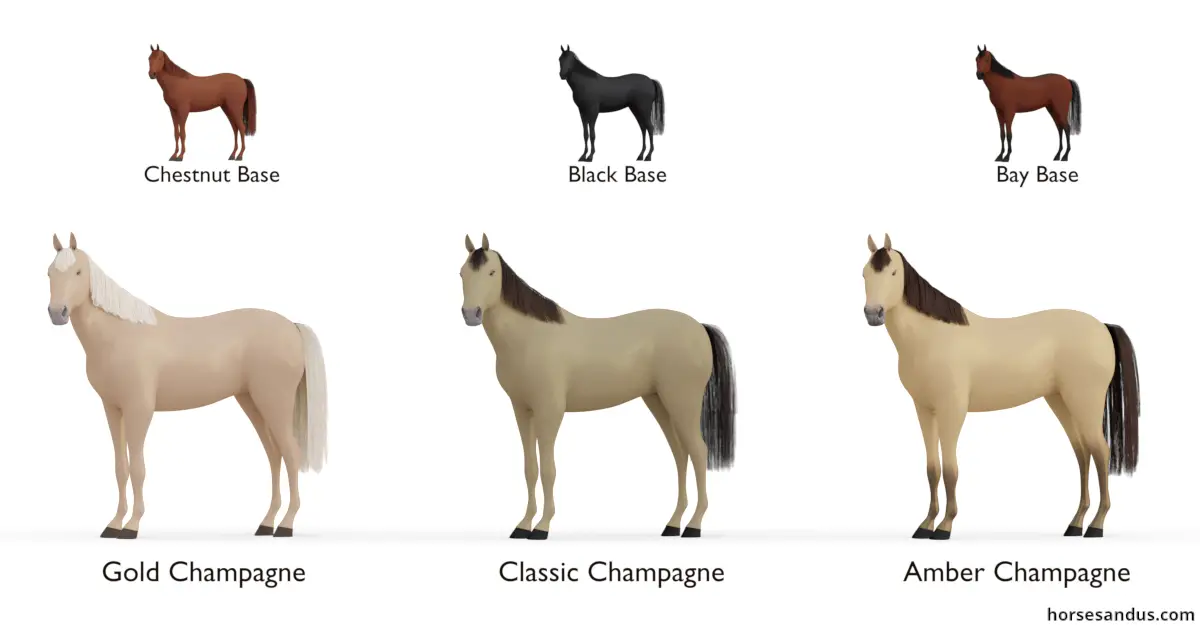
Gold Champagne Horse (chestnut base)
A Gold champagne horse coat color is the result of the champagne dilution on a chestnut coat.
The coat is gold, and the mane and tail are typically ivory. In some cases, the mane and tail are the same color as the body (“self-colored”). These gold champagnes are sometimes called “dark gold” and can be an all-over apricot shade.
The Gold Champagne foal is born with a reddish coat, clear pink skin, and pale blue eyes.
Dark gold champagnes can be confused with red dun, while those with the paler ivory manes and tails have been confused with palominos.
We can usually distinguish them by observing the skin. Palominos and red duns have dark skin whereas champagne will always have light-colored skin with freckles.
But sometimes, it is not possible to differentiate them just by looking at these physical traits. Another way to distinguish them is by studying their pedigree and noting where the dilute lines come from.
However, the easiest way to distinguish these horses is through DNA tests.
Classic Champagne Horse (black base)
A Classic champagne horse coat color is the result of the champagne dilution on a black coat.
As the name suggests, it is the most known champagne color. The body coat is taupe color and the mane and tail a darker shade of brown. The legs may also be slightly darker.
Sometimes the overall effect of this coat color may resemble lilac or even green.
The Classic Champagne foal is born with clear pink skin and pale blue eyes. The coat usually does not change color as they grow older. But it may lighten only slightly after shedding the foal coat.
This color is usually not mistaken for others. But occasionally it can be confused with buckskin or grullo (although it does not have primitive markings).
In the past “Lilac dun” was used to name this color.
Amber Champagne Horse (bay base)
The Amber champagne horse coat color is the result of the champagne dilution on a bay coat.
The coat is gold with the points (mane, tail, lower legs) diluted to chocolate brown. Just as there are varying shades of bay, the gold body coat may also vary in shade from light tan brown or light yellowish-brown.
The Amber Champagne foal is born with a buckskin looking coat with brown points, clear pink skin, and pale blue eyes.
Amber champagne can be confused with buckskin or bay dun.
These can be distinguished by observing the physical traits.
Many amber champagnes have light colored lower legs whereas buckskins have black legs.
Additionally, they can be distinguished by the light skin with freckles in champagnes versus the black skin in buckskins and bay duns.
Sable Champagne Horse (seal brown base)
The Sable champagne horse coat color is the result of the champagne dilution on a seal brown coat.
This coat is difficult to visually distinguish from classic champagne.
In a seal brown horse, the Agouti gene only suppresses the black from certain areas (on the muzzle, around the eyes, behind the elbow, and in front of the stifle), leaving most of the body color to be black.
This explains the resemblance with classic champagne, which is on a base black coat and the sable champagne on a mostly black coat color, characteristic of the seal brown horse. Classic and sable champagnes are difficult to distinguish without a DNA test.
The Sable Champagne foal appears to be an intermediate between amber and classic. But then they grow to look more like classic champagnes.
The Champagne dilution on base coat colors (animation)
History Of The Champagne Horse
This horse color gene is named “champagne” because it was first discovered in a DNA test of the Tennessee Walker mare named Champagne Lady Diane, born in 1969. She was named for her color, which reminded her owner of sparkling wine.
There is, however, evidence that the Champagne mutation existed before Champagne Lady Diane, based on descriptions of horses at much earlier dates. Such as the Tennessee Walking Horse mare named Golden Lady, born around 1910, and an American Cream Draft horse named Old Granny, born around 1913. But it has been traced to even earlier dates, and the champagne mutation likely occurred around mid-1800.
Before the gene was identified, the champagne horses were often registered as a more common color, such as palomino or buckskin, because these were the closest known matches.
The International Champagne Horse Registry was created with the purpose of more accurately tracing the champagne gene. This registry has mapped the likely history of this equine dilution gene in addition to documenting known champagne horses.
The genes behind the Champagne dilution

Champagne color in horses is controlled by the Champagne gene which is dominant and represented by CH.
The dilution allele (CH) is dominant over the recessive non-dilution allele (ch).
Although it has been observed that homozygotes may be slightly more dilute and have fewer freckles than heterozygotes.
So this may raise the question if the gene is truly dominant, although the differences between homozygous and heterozygous are very subtle. But it can also not be considered a typical incomplete dominant like the cream gene where the differences between homozygous and heterozygous are very pronounced,
Since Champagne is a dominant gene, it will always be expressed. Unlike the silver dilution on a chestnut base, horses can not “carry” the champagne dilution undetected.

Champagne genes inheritance
Since the Champagne dilution is a dominant trait, a horse requires only one parent to carry and pass on the gene to inherit that trait.
Using the following Punnett squares with the Classic Champagne as an example, we can see some of the possible outcomes from different genotype combinations.
Horse breeds That Can Have The Champagne color?
So far, the champagne gene has only been found in American breeds, particularly in Tennessee Walking Horse, American Saddlebred, American Quarter Horse, Missouri Fox Trotter, Kentucky Mountain Saddle Horse, Paint Horse, Appaloosa, and Miniature Horse.
It is believed that all champagne horses have descended from the same horse. This belief is based on studies that suggest there was only one mutation of the Champagne gene.
This mutation most probably occurred around the mid-1800s, because the gene has not been traced before that time.
Further Reading
If you would like to learn more about horse colors and white patterns, you may want to read the following books, available on amazon.
The links below that lead to products on Amazon are affiliate links and I earn a commission (with no additional cost for you) if you make a purchase.
The following books are an introduction to horse colors and white patterns which are full of images and very easy to understand.
The Equine Tapestry: An Introduction to Colors and Patterns The Ultimate Guide to Horse ColorsA more technical book about horse colors, but still very easy to understand.
Equine Color GeneticsSources
https://journals.plos.org/plosgenetics/article?id=10.1371/journal.pgen.100019
http://www.ichregistry.com/articles/Just_About_Everything-rev6-10.pdf
